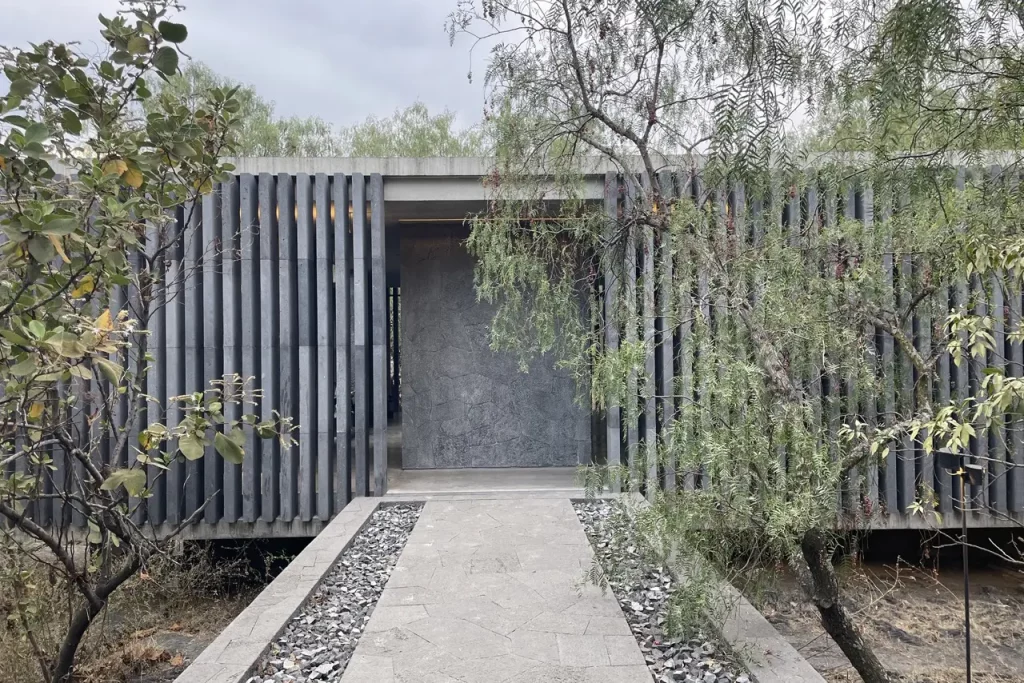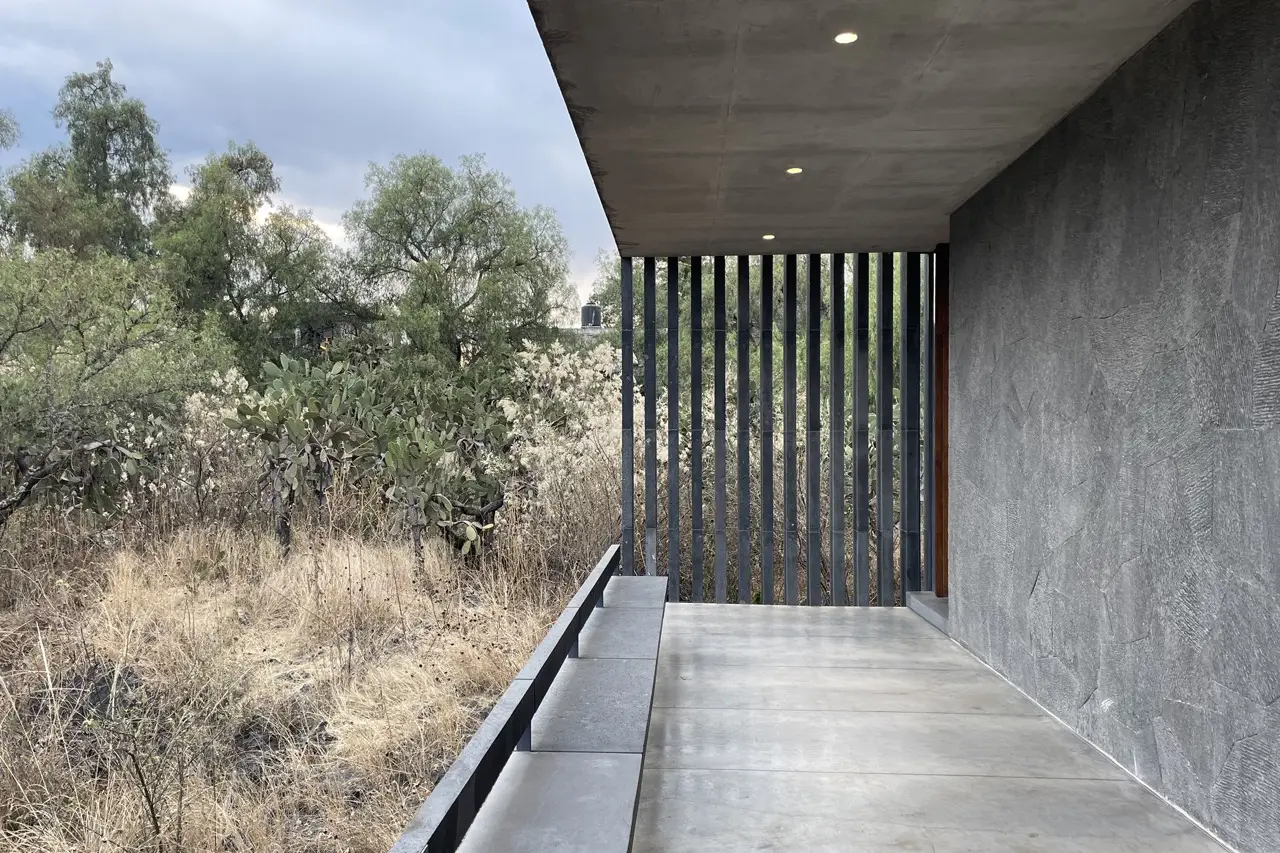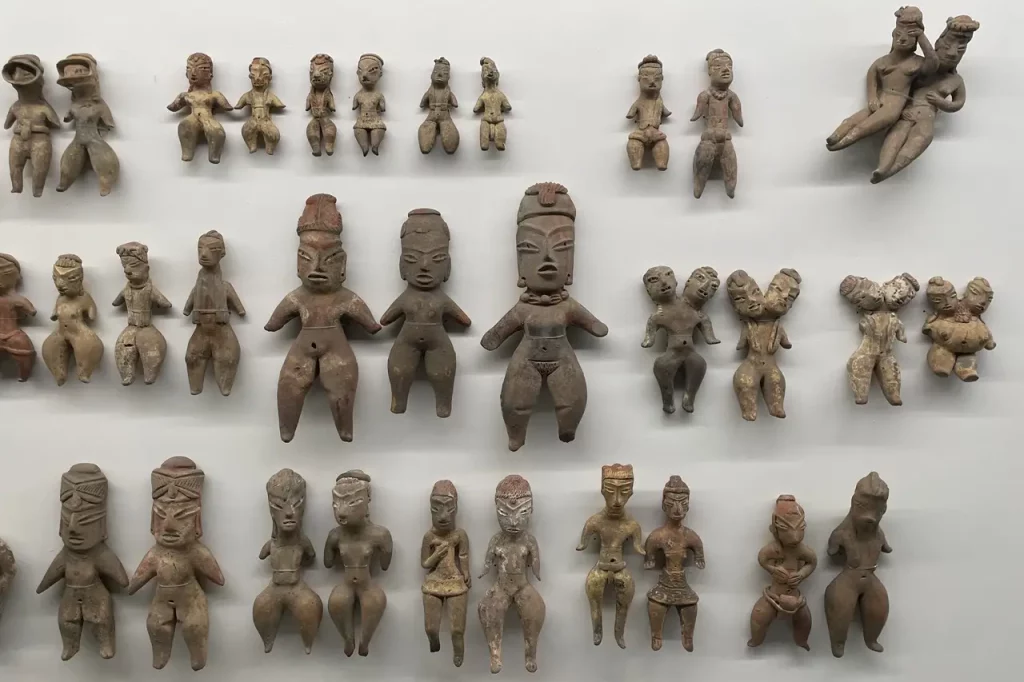Inspired to Aztec temples, the museum hosts a permanent collection of pre-Columbian finds, temporary exhibitions of contemporary artists and a botanical garden
Museo Anahuacalli, Mexico City
Museo Diego Rivera Anahuacalli, better known simply as Museo Anahuacalli, is a museum and art center in Mexico City designed by Mexican muralist Diego Rivera. It is located in the San Pablo de Tepetlapa neighborhood of Coyoacán, ten minutes by car from the museum dedicated to Frida Kahlo, whom Rivera was married to.
Diego Rivera came up with the idea of building the Museo Anahuacalli to preserve his personal collection of pre-Hispanic finds and open a selection of them to the general public. Nowadays, the museum hosts a permanent collection of pre-Columbian art in the main building and temporary exhibitions in the adjacent Diego Rivera gallery, the latter being an express request of the artist. In his will he stipulated that the museum would present contemporary work alongside the permanent collection. The current exhibition is Nunca Solo by American sculptor Alma Allen.
Museo Anahuacalli is also surrounded by a botanical garden, where a variety of endemic flora and fauna are safeguarded.
Museo Anahuacalli’s history
In 1940 Diego Rivera went to the United States in order to paint a mural for the ‘Art in Action’ program of the Golden Gate International Exposition. With him, he took his wife Frida Kahlo and his passion for pre-Hispanic cultures, which emerges from the mural, entitled Pan American Unity. Such passion had led him over the years to gather a personal collection of pre-Hispanic figurines, which he called «the idolage».
When, in 1941, he came back to Mexico, Rivera decided to turn his passion into a museum, which would also have served as a city of arts. He chose the rocky terrain of San Ángel that once surrounded the Xitle volcano and personally designed the project for the new building, which he wished to be a work of art in itself. His wife Frida Kahlo would write: «After his painting work, what excites him most in his life are his idols. His idea was always to build a house for the idols».
A dream Rivera was not able to see come true, because the construction works started in 1942, suffered several setbacks due to the lack of funds, and were still going when the artist died, in 1957. Still, Rivera’s youngest daughter Ruth managed to complete the construction together with architect Juan O’Gorman and with the financial support of Dolores Olmedo, Mexican businesswoman, philanthropist and musician. The museum was inaugurated in September 1964. To honor Rivera’s memory, a quote of his was engraved on the museum foundation stone: «I return to the people what I was able to rescue from the artistic heritage of their ancestors».
Museo Anahuacalli’s architecture
In his project Rivera searched for a balance between the pre-Hispanic and the modern style. O’Gorman continued along this path and derived inspiration from Mexican folk art, combining it with the rules of the organic architecture conceptualized by American architect and designer Frank Lloyd Wright – a construction perfectly integrated with nature.
Museo Anahuacalli’s design is inspired by the teocalli (meaning “god’s house”), a terraced pyramid surmounted by a temple, where religious rituals took place in Pre-Columbian Mexico. Following such inspiration, each corner of the building is dedicated to a Mesoamerican deity representing a natural element: Chicomecóatl (earth), Ehécatl Quetzalcóatl (wind), Tláloc (water), and Huehuetéotl (fire).
The structure was built with volcanic stone deriving from the eruption of the Xitle volcano, which occurred in 400 B.C. and gave rise to the same land where the museum would have been erected centuries later. The ecosystem of desert plants that resulted from the eruption and served as an inspiration for Rivera can be seen today from the museum terrace, which overlooks the Pedregal lava bed.
In 2021, Museo Anahuacalli inaugurated some new spaces, designed by Mexican architect Mauricio Rocha Iturbide, who attempted to dialogue with Rivera’s project. Among these, there is a library, outside spaces, laboratories and multidisciplinary rooms.
Museo Anahuacalli interiors
The building has three levels and twenty-three rooms, each decorated with visual motifs from pre-Hispanic mythology. Actually, Mesoamerican culture can be breathed throughout all the structure, the passage through which has been conceived as a journey from the Underworld to the sun.
Crossing a platform with ancient sculptures, the lower level of the museum is accessed through an oval arch with elongated windows made of amber-colored onyx stone. These windows look opaque from the outside and translucent from the inside and let pass dim natural light. On the contrary, the intermediate floor is illuminated by large windows with two snake heads beneath them.
The ground floor – which represents the Underworld – is characterized by walls of different thickness depending on their function and museographic altars that remind of those used to worship deities in pre-Columbian cultures. The first floor features various exhibition rooms and the so-called Diego Rivera’s Studio, a section illuminated by natural light, which represents that earthly world. The second floor is surmounted by a trapezoid-shaped roof, which echoes the ancient Mesoamerican temples and stretches towards the sun.
All the interiors of the museum are decorated with mosaics, whose complexity varies according to the level: while those of the ground floor are monochromatic, on the first and second floor stones of different colors were used.
Museo Anahuacalli’s permanent collection
The museum’s permanent exhibition is composed by a selection of Diego Rivera’s private collection of pre-Hispanic items, which he put together in thirty years at a time when buying, selling and exchanging such ancient manufacts was still permitted by the law. Today, this would be forbidden. In his quest, which he began during his childhood, the painter was flanked by his wife Frida Kahlo and aided by anthropologist Eulalia Guzmán.
This was not just a hobby, but also an attempt to rescue and preserve Mexican heritage at a time when the Mexican Revolution had infused people with a nationalist thinking. Moreover, Rivera as a painter had an interest in studying Mexican art development and often derived from pre-Hispanic culture inspiration for his works. For example, his Xochipilli, depicted in the stairs of the Secretariat of Public Education in Mexico City, is considered to be the most accurate representation of the Aztec Prince of Flowers (this is the deity’s name meaning).
Juan Coronel Rivera on the permanent exhibition
Historian, writer and grandson of the painter Juan Coronel Rivera declared: «When the collection was incipient, around 1934, he actually had selected pieces; each one of them he placed on a base. Later, when the quantity was overwhelming, when it went up to 30,000 pieces, he just placed them where they fit». At the time of his death, Rivera’s collection amounted to over forty-five thousand works, of which two thousand are now exposed to the Anahuacalli Museum. These are mainly everyday life objects from Western Mexico regions, such as Jalisco, Colima, Nayarit and Michoacán.
The Diego Rivera’s Studio displays a series of sixteen sketches made by the painter, mostly drafts for his murals. Here, for example, visitors have the chance to see what would have looked like the mural Man at the Crossroads, painted in 1932 at the Rockefeller Center, if the magnate Nelson Rockefeller would not have ordered to destroy it afterwards. And there is also a drawing that does not belong to any mural, entitled Diego as a child drawing.
Alma Allen, Nunca Solo
From February eight to May twenty-eight Museo Anahuacalli welcomed Alma Allen with his solo exhibition Nunca Solo (Never Alone). Allen is an American self-taught sculptor currently living in Mexico, who works with foraged wood, bronze and stone. His creations range from microscopic fetishes to colossal pseudo-figures, crafted with materials he personally collects from the natural environment surrounding his studio.
Nunca Solo features a new series of large-scale bronze sculptures specially designed by Allen for the museum grounds and interiors, with the aim to converse through art with Rivera’s monumental testament. Karla Niño de Rivera, curator of Anahuacalli Museum, declares: «Alma is engaging with the museum as what it is: a temple, a model of the universe, as a cosmogram. Everything is political, especially in the shadow of Diego Rivera, but Alma approached the space, even before we met, with a personal sense of inquiry. Alma was in the temple like a hermit in a cave, and the emotional intensity of the works is a spiritual engagement that reflects the experience of a non-linear transformation».
Allen’s sculptures are pervaded with a sense of movement that becomes an expression of life force, mixing a variety of allegorical and organic references to combine abstraction, poetics, narrative and mythology: «I am interested in the spiritual work of sculptors, communicating without language. I mean in the effort to communicate, sometimes across time or understanding, with something that is incapable of returning the speech».
Museo Anahuacalli
Museo Anahuacalli is a museum and art center designed by Mexican painter Diego Rivera and located in Mexico City. The museum features a permanent collection of pre-Columbian manufacts, a collection of Rivera’s sketches, temporary exhibitions of contemporary artists and a botanical garden, as well as several multidisciplinary spaces.
Debora Vitulano

























